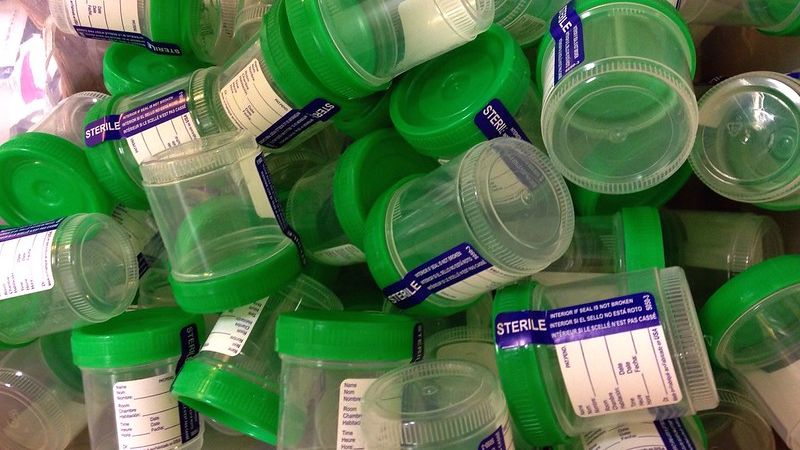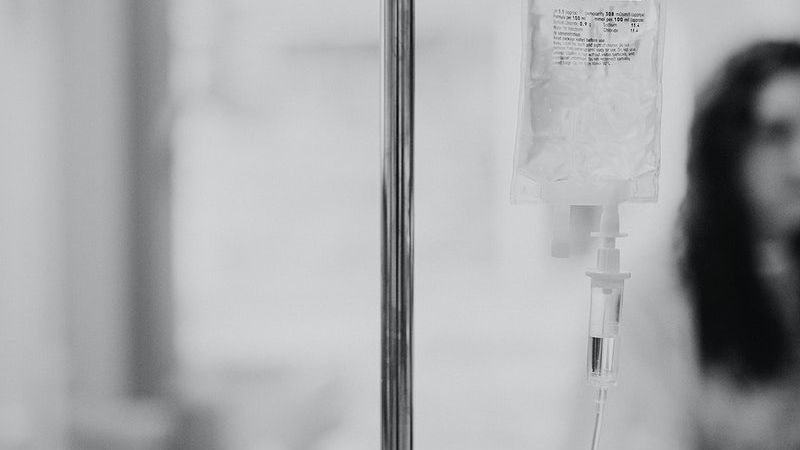Urinary Tract Infection

Urinary Tract Infections (UTI) are considered common during pregnancy but require treatment. HCPs may routinely screen for UTIs – even in women without symptoms – through simple urine tests during prenatal appointments.
Various hormonal and physical changes during pregnancy make pregnant women more susceptible to UTIs, and women who have never experienced a UTI before may contract their first one during pregnancy.
Although it is possible that early, uncomplicated UTIs may resolve on their own, this depends on the woman’s symptoms, medical history, overall health of her pregnancy, stage of gestation, and severity of infection.
Some research indicates that waiting before starting treatment may be considered too risky and women should have a risks and benefits discussion of antibiotic treatment with their HCP. There are numerous safe antibiotic choices that are very effective at managing and preventing UTIs during pregnancy.
Women who experience symptoms that may indicate a UTI should call their HCP to get screened; it is possible for untreated UTIs to spread to the bladder or kidneys which are very serious complications during pregnancy.
Background
A urinary tract infection (UTI) is an infection of the urinary tract (bladder, kidneys) due to the presence of bacteria in the urine. UTIs are among the most common medical complications during pregnancy, with an incidence as high as 18% of all pregnant women in some populations.
Most UTIs start in the lower urinary tract, which is made up of the urethra and bladder. Bacteria live on the skin near the anus or in the vagina, which can spread and enter the urinary tract through the urethra, causing a UTI.
If bacteria move farther up the urethra, this can cause a bladder infection (cystitis). If untreated, the infection can continue to spread to the kidneys (pyelonephritis) and may lead to severe complications.
The most common organism that causes UTIs is Escherichia coli (E. coli), accounting for 80% to 90% of infections. Group B Strep follows behind at around 5% of infections.
Most pregnant women with a UTI have asymptomatic bacteriuria, indicating they have a UTI with no symptoms. HCPs conduct urine screenings to catch UTIs because even asymptomatic UTIs can lead to cystitis or pyelonephritis.

The prevalence of acute pyelonephritis in most reporting ranges from 0.5% to 2% of all pregnancies, higher than the general population.
Hormonal and physical changes make pregnant women more vulnerable to UTIs.
Beginning around 6 weeks of pregnancy and peaking during 22 to 28 weeks, approximately 90% of pregnant women develop hydronephrosis, a blockage or obstruction of the kidneys’ urine collection system, which is considered normal during pregnancy but increases bacteria levels.
Further, up to 70% of pregnant women develop glucose in the urine, which encourages bacterial growth. This is in addition to increases of urinary hormones of the lower urinary tract that make it difficult to fight off invading bacteria.
Lastly, pregnancy slows the flow of urine through the ureters. When urine flow is slow, bacteria may not be flushed out of the urinary tract.
Types and Symptoms
UTIs include asymptomatic bacteriuria (positive urine culture for UTI but no symptoms), acute cystitis (bladder infection), and pyelonephritis (kidney infection).
With asymptomatic bacteriuria, the infection is limited to bacterial growth in urine. If a woman is symptomatic, bacteria has invaded urinary tract tissues, inducing an inflammatory response causing physical symptoms. The presence of symptoms usually means the infection has spread to at least the bladder, but not always.
Symptoms include a strong urge to urinate, even when urine is not present. When urine does flow, it can cause sharp pain, itching, or burning, with an urge to urinate again returning shortly afterward. Soreness can also be felt in the lower abdomen, in the back, or in the sides.

With severe lower urinary tract inflammation, the desire to urinate may be constant with only a few milliliters of urine eliminated with each voiding.
The urine itself may look cloudy, be tinged with blood, or have a strong odor.
Blood in the urine may be caused by a UTI, but always necessitates a call to an HCP during pregnancy to rule out other causes.
If bacteria enter the ureters and spread to the kidneys (pyelonephritis), symptoms may also include back pain, chills, fever, nausea, and vomiting. A fever generally does not occur with a bladder infection. Pyelonephritis may present with frequency, stinging and burning, or trouble emptying.
Nearly one in five of pregnant women with pyelonephritis also have septicemia (infection of the bloodstream) at the time of diagnosis, which is why attention to symptoms and completion of urinary screenings are crucial to prevent severe complications.
Complications
UTIs are managed more aggressively in pregnant women than in non-pregnant women due to their associated complications. Additionally, there is a much higher risk of a pregnant woman with a UTI advancing to pyelonephritis than a non-pregnant woman with a UTI.
An untreated UTI is associated with hypertensive disorders of pregnancy (such as preeclampsia), anemia, and infection of the uterus and amniotic sac. The baby could also be born with low-birth weight, sepsis, pneumonia, or group B streptococcus infection.
Preterm labor appears to be the strongest potential complication of a UTI, although this does remain controversial. It appears that in the case of asymptomatic bacteriuria, if the infection does not progress, preterm delivery is less likely.
Pyelonephritis, however, can be a life-threatening illness.
Acute pyelonephritis is most common in late pregnancy, with 80% to 90% of cases occurring in the second and third trimester.
It is usually a consequence of undiagnosed or inappropriately treated lower UTI, or a complication of 30% to 40% of cases of untreated asymptomatic bacteriuria.
A pregnant woman with pyelonephritis may develop acute kidney injury, anemia, hypertension, preeclampsia, sepsis and septic shock, destruction of red blood cells, low platelet count, and acute respiratory distress syndrome, particularly if treatment is initiated too late.
Acute pyelonephritis can lead to preterm labor and delivery and requires immediate and aggressive treatment. Additionally, maternal UTI has been linked to neonatal UTI shortly after delivery.
Diagnosis
Urine culture remains the most reliable test for the diagnosis of UTIs and is an important screening tool to avoid potential complications for an infection most pregnant woman do not even know they have.
The urine sample may be grown in a culture to see which bacteria are present and/or tested with different antibiotics to see which one destroys the bacteria best.
Current recommended guidelines suggest that pregnant women obtain a urine culture screening at their first prenatal visit, or between 12 and 16 weeks of gestation to catch an asymptomatic infection.

It is also recommended that if a pregnant woman had a positive culture during pregnancy, that a repeat urine culture be obtained during the third trimester as well, because the urine of treated patients may not remain sterile for the entire pregnancy.
It is not routine practice to perform an additional screening for women who tested negative early in pregnancy, although some researchers do advocate for this, as UTIs can occur at any stage of pregnancy.
It has been estimated that leaving screening to a single urine culture before 20 weeks’ gestation could leave more than one-half of asymptomatic bacteriuria cases undiagnosed.
Complicating the process of screening procedures is the high rate of false positives. Some HCPs will recommend an additional urine culture one week later in order to verify results and avoid unnecessary treatment, especially if no symptoms are present. Other HCPs feel that waiting an additional week to re-test is too long to wait before starting treatment in the event it was a true positive.
Management
For pregnant woman presenting with symptoms of a UTI, treatment is generally started before the results of the culture are available, due to the risks of complications from waiting.
Antibiotic treatment is the standard therapy for UTIs, and symptoms usually begin to respond within 24 to 48 hours.
Asymptomatic bacteriuria must also be treated in every case that is diagnosed, to avoid the infection spreading to the bladder and kidneys.
Although it is possible for early and uncomplicated UTIs to resolve on their own, watchful waiting can carry high risk during pregnancy, and women need to discuss the risks and benefits of antibiotic treatment with their HCP. It may also depend on the type of bacteria causing the infection, which may not always be known.
Early, aggressive treatment is important in preventing complications from pyelonephritis. Pregnant women need to take all medication as prescribed, even if symptoms disappear. If the treatment is stopped early, the infection could still be present or return. A repeat urine culture should be obtained after treatment to ensure the infection has been fully treated.
Hospitalization and intravenous antibiotics may be required for women with pyelonephritis, as well as women who are exhibiting signs of fever, sepsis, vomiting, dehydration, and contractions. After 48 hours of intravenous antibiotics, oral antibiotics are then used for 10 to 14 days.

Prevention of recurrence is also an important treatment step in managing UTIs, and usually requires preemptive (prophylactic) medication.
As many as one-third of women diagnosed with asymptomatic bacteriuria experience a recurrent infection.
Almost a quarter of pregnant women diagnosed with pyelonephritis have a recurrence during the same pregnancy.
Women who have had more than one bladder infection or have had a kidney infection may need to take antibiotics throughout pregnancy to prevent subsequent infections.
Antibiotics
There is no consensus regarding which antibiotic should be most recommended or the time frame in which the antibiotic should be taken. Antibiotic choice depends on the type of infection and woman’s medical history.
Antibiotics have been prescribed ranging from a single-day course to 10 days. The usual recommended time frame appears to be 5 to 10 days. Shorter time frames may leave a pregnant woman at risk for recurrent infection.
Antibiotics used to treat UTIs during pregnancy have strength against E. coli, which include, depending on stage of pregnancy: nitrofurantoin (see below), sulfisoxazole, cephalosporins, ampicillin, and amoxycillin.
Historically, ampicillin has been the drug of choice, but in recent years E. coli has become increasingly resistant to both ampicillin and amoxycillin. Ampicillin resistance is found in 20% to 30% percent of E. coli cultured from urine in an out-patient setting.

Nitrofurantoin (and possibly also trimethoprim-sulfamethoxazole) is a controversial antibiotic during pregnancy for the treatment of UTIs, with some researchers strongly advocating its use and safety, while others recommend avoiding it during pregnancy, or at least during the first trimester and the last four weeks of pregnancy. Although reporting is inconsistent, nitrofurantoin use in the last few weeks of pregnancy has been associated with an increased risk of jaundice and brain damage in the newborn.
In a large American population-based National Birth Defects Prevention Study, maternal use of sulfonamides and nitrofurantoin was associated with more serious defects than other antibacterial classes.
However, this study has been criticized for recall bias, unconfirmed antibiotic use by medical records, inability to determine whether the birth defect was due to the antibiotic itself, the infection for which the antibiotic was prescribed, or other confounding factors.
Another study of 1,334 women who filled prescriptions for nitrofurantoin in the first trimester determined the drug was not associated with an increased risk of major malformations or higher rates of stillbirth, neonatal death, low birth weight, or preterm delivery.
The American College of Obstetricians and Gynecologists indicates that prescribing sulfonamides or nitrofurantoin in the first trimester is still considered appropriate when no other suitable alternative antibiotics are available but should be avoided in early pregnancy if possible.
Sulfonamides and nitrofurantoins may continue to be used as first-line agents for the treatment and prevention of UTIs in the second and third trimesters.
Although fluoroquinolones (such as norfloxacin) are very effective against UTIs, they should not be prescribed during pregnancy because of possible toxic effects on the fetus. Further, they are considered to be “last resort” antibiotics for the general population with UTIs due to potential muscle, tendon, and artery damage.
Tetracyclines (minocycline, doxycycline, and tetracycline) should also be avoided in pregnant women due to evidence of embryo toxicity in animal studies, and toxic effects on fetal teeth and bones. Cases of maternal liver toxicity associated with the use of tetracycline agents during the third trimester have also been reported.
Action
Women should call their HCP anytime they experience the symptoms described above, or make sure to get screened at least once during pregnancy.
Although it is possible that early, uncomplicated UTIs can resolve on their own, depending on the woman’s symptoms, medical history, overall health of her pregnancy, and stage of gestation, waiting before starting treatment may be considered too risky for some women. Pregnant women should have a risks and benefits discussion of antibiotic treatment with their HCP.
Proper hygiene, staying hydrated, wearing breathable underwear, urinating after sex, and the avoidance of perfumes, douches, sprays, and bath bombs, as well as wiping from front to back can help lower the risk of UTIs during pregnancy.
Cranberry products (mainly juice) have been used as an intervention to prevent recurrent UTIs for decades, based on previous research indicating cranberries prevent bacteria adhering to the uroepithelial cells in the bladder.
Recent research indicates there is not enough evidence to recommend any cranberry product to prevent UTIs. Studies have also shown that women have a difficult time adhering to a cranberry product regimen long enough to see positive effects.
Women should consider sharing and submitting any experience they have had with a UTI during pregnancy. This can help other women learn more about the condition and better recognize when to call an HCP.
Resources
Urinary Tract Infections (American College of Obstetricians and Gynecologists)
Sulfonamides, Nitrofurantoin, and Risk of Birth Defects (American College of Obstetricians and Gynecologists)
Antibiotic Treatments for Urinary Tract Infections Are Commonly Prescribed To Pregnant Women (U.S. Centers for Disease Control and Prevention)
Urinary tract infection in pregnancy (U.K. Royal College of Obstetricians and Gynaeologists)